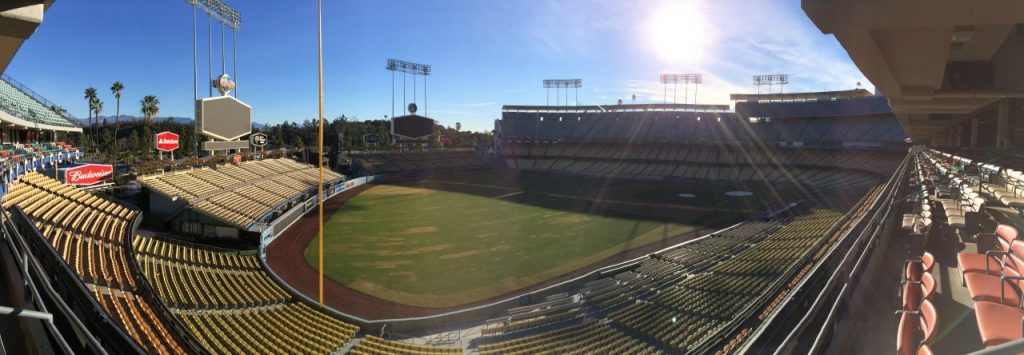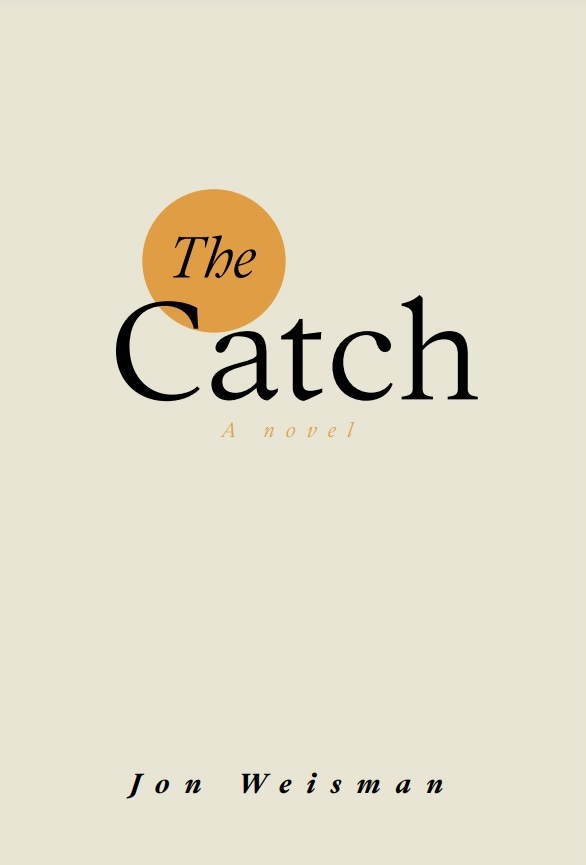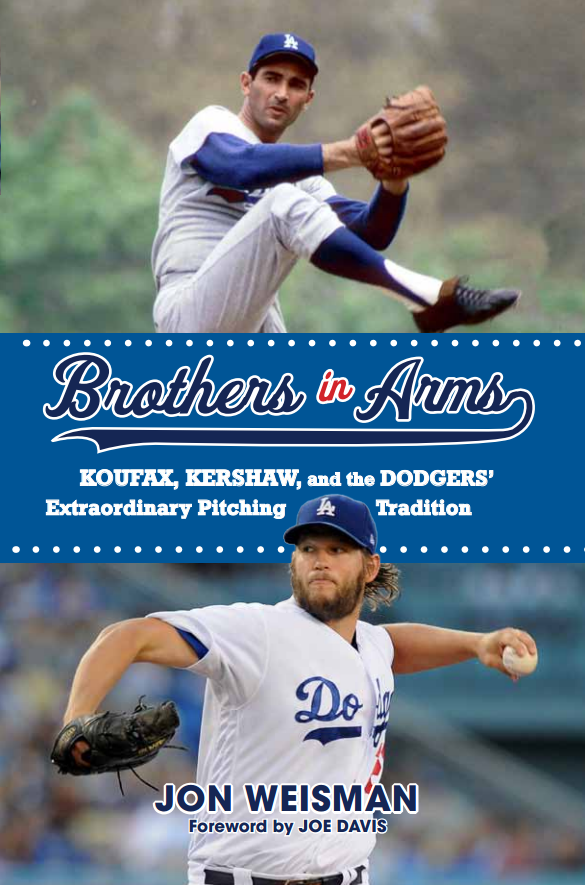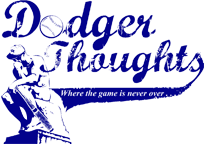Vicente Padilla is heading back to the disabled list with a balky forearm, meaning that Ramon Troncoso will be called up and perhaps get a chance to work on that 20.25 ERA. With Padilla, Jonathan Broxton, Hong-Chih Kuo and Blake Hawksworth out, more than half the Dodgers’ regularly scheduled bullpen is on the DL. That’s brutal.
Page 306 of 381
From Ramona Shelburne of ESPNLosAngeles.com:
Major League Baseball is looking into photographs that show Los Angeles Dodgers outfielder Andre Ethier making an obscene gesture at a photographer before Monday’s game against the Milwaukee Brewers at Dodger Stadium.
“We are aware of the pictures and will talk to the appropriate people about them,” MLB spokesman Pat Courtney wrote in an e-mail.
The incident — in which Ethier was snapped flipping his middle fingers at a photographer — occurred during the Dodgers’ batting practice at approximately 4:45 p.m. PT on Wednesday, before the stadium was opened to the general public.
Ethier said Thursday that he had been contacted by the league and had already discussed the matter with Dodgers manager Don Mattingly. He had yet to receive any indication of whether he’d be disciplined by either the league or the team.
The incident occurred, Ethier said, when he repeatedly asked a photographer standing behind the batting cage whether he was finished taking pictures of him because it was interrupting his preparations for the game.
“I just got kind of annoyed, so to that extent I guess I slipped up and that temper you guys like to write about got ahead of me,” Ethier said. “I didn’t use my head or use the best judgment in that situation. Sometimes you make a mistake and it’s unfortunate.”
Ethier denied the initial report, published on TheBigLead.com, in which a source claimed he used profanity with the photographer and was loud enough for children standing nearby to hear him. …
Steve Dilbeck of the Times was less than impressed with Ethier’s contrition, or at least his sense of when a joke has gone on too long.
Andre Ethier has gone hitless in five straight games, going 0 for 17 in that span. The Los Angeles Dodger record for consecutive hitless games is 29 by Kazuhisa Ishii (0 for 44) from 2002-2003. For a non-pitcher, Jose Gonzalez holds the mark with 20 straight games (0 for 31) from October 1990 through July 1991.
For consecutive hitless at-bats by a Los Angeles Dodger non-pitcher, I believe the record belongs to Larry Burright with his 0-for-37 streak in 1962. Charles Johnson went 0 for 33 in 1998.
Ethier’s has the most consecutive at-bats without a hit by a Dodger non-pitcher this season, but Ted Lilly is currently 0 for 18 this season and on an 0-for-36 run dating back to 2010. Ryan Theriot had an 0-for-25 skein last year.
Jamie McCourt is expected to ask Los Angeles Superior Court to order the Dodgers to be sold as soon as possible, Bill Shaikin of the Times reported Wednesday.
Affirmation of this request would remove MLB from the delicate equation of how to extricate the Dodgers from the McCourt family.
The first question that came to mind: Why would Judge Scott Gordon say yes?
… Sources close to Jamie McCourt told ESPN The Magazine’s Molly Knight that Jamie has been alarmed by the prospect of her ex-husband draining equity out of the Dodgers as he digs in to fight MLB from taking over the club. California community property law states that the designated control person of a shared asset has a duty to the non-controlling party to protect the asset from diminishing substantially in value. Jamie’s lawyers are expected to argue that Frank’s ownership is seriously harming the value of the Dodgers — and with it, Jamie’s potential take when the team is sold. …
All that is expected to happen today is that Judge Gordon would set a date for a hearing on Jamie’s formal request. And another legal cycle begins …
Update: ESPNLosAngeles.com has an update on Jamie’s filing, in which she states (for the first time, I believe) that the Dodgers would be better off without McCourt ownership. More from Shaikin:
… “As I’ve said all along, my goal is to resolve this situation for my family in a way that also advances the best interests of the Dodgers fans, players and franchise,” she said. “This motion will hopefully provide some momentum in the right direction.”
Steve Sugerman, the spokesman for Frank McCourt, had no comment Wednesday night, and neither did Pat Courtney, a spokesman for Major League Baseball. In her filing, Jamie McCourt urges Judge Scott Gordon to act before Major League Baseball can seize the Dodgers, arguing the highest sale price could be achieved if couple sells the team, not the league.
“MLB is under no obligation to maximize the proceeds of such a sale,” the filing says. Jamie McCourt specifically asks for a sale of “the Dodger assets,” including the team and its media rights, Dodger Stadium and the surrounding parking lots. Under McCourt management, the team, the stadium and the parking lots are separate entities, and Frank McCourt has not ruled out the possibility of selling the team but keeping the stadium and/or the land. …
If Gordon does not order the team sold, Jamie McCourt asks that the judge remove Frank McCourt as the spouse in control of the Dodgers and install her in that position. …
Update 2: Roberto Baly of Vin Scully Is My Homeboy had a funny exchange with former Dodger pitcher Dave Stewart, the agent for Matt Kemp.
Baly: “Hey Dave, when is Matt Kemp signing that big contract?”
Stewart: “Soon as you get real owners.”
Update 3: Judge Gordon set the hearing for June 22, a date that might come too late to prevent MLB from taking control of the Dodgers.
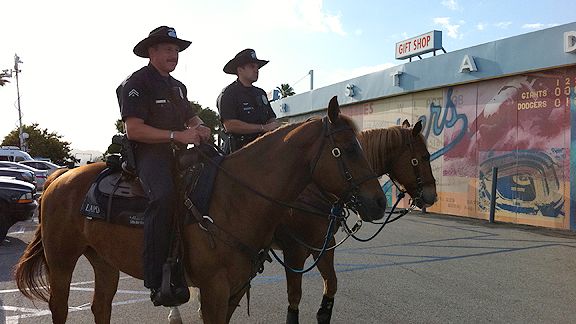 Jon Weisman/ESPNLosAngeles.com
Jon Weisman/ESPNLosAngeles.comHeading from the press box to the club level admissions entrance on the port side of Dodger Stadium, you walk through the recently installed exhibit celebrating the history of the Dodger franchise.
It’s overflowing with mementos so engrossing that you could spend your entire evening inching through the halls. It was also a little too perfect a reminder of what’s at stake when you’re talking about the fate of the team at Chavez Ravine.
I didn’t know what to expect when I came out the other side, minutes after the gates opened to let customers into the ballpark for the first new Giants-Dodgers series since Bryan Stow’s beating in the parking lot March 31. I didn’t even know what I was looking for, other than a vague sense of wanting to capture what it was like.
While I was fairly confident that there wouldn’t be any overt hostilities between Dodger and Giants fans in the hopefully New World Order of Sanity, I did recognize the possibility of a heightened level of wariness among the ticket-holding people.
What caught me off guard was how mellow it was. How completely quiet.
Outside of the disembodied, prerecorded voice of Vin Scully, recalling animatronic Abraham Lincoln at Disneyland as he recited the rules of good behavior, there was such tranquility in the air. I don’t mean just, “Hey, we’re not at each other’s throats.” I mean a place where you could let out that deep breath that you’ve been holding since McCourt, since Stow, since the offense disappeared.
The way you’re supposed to feel at the ballpark.
Emphasis on park. Early morning rain had given way to perfect May billows of clouds. The temperature was ideal. A cotton-candy evening. Grab a spot and sit a spell.
Yes, there were more police, on foot and on horseback and on Segway, but they chatted amiably like they were at the county fair. Fans strolled. They saunted. They perambulated.
On nights like this, you remember that Dodger Stadium sells itself, if you just let it.
I continue circumnavigating the globe, as it were, working my around the back of the outfield pavilions and heading up along the right-field side, past Loge, past Club. I see a couple, the man wearing an SF cap on his white hair, and I engage them in neighborly conversation.
“We came to a game the same series [as the Stow incident],” recalls Richard Tetu, a San Francisco transplant now residing in Pasadena, “and I deliberately didn’t wear [the cap].”
What changed? Smiling at his wife, he says, “She called me a wuss.”
Says Linda Tetu, a Dodger fan with her L.A. cap: “These people [around us] were all decked out in orange.”
But in addition to becoming more courageous, Richard, who brought Linda to Wednesday night’s game for free using the Dodgers’ promotion for military veterans, realized there was less reason for fear now.
“We knew the security would be better,” he said, noting that he has been following the story raptly since it began, “and we knew the crowds would be smaller.”
For Los Angeles resident Carlos Flores, a Giants fan from the days of Will Clark — “not Barry Bonds; Will Clark” — there was a sense of patient bemusement at all the fuss. A regular attendee decked in a Giants jersey, he’s already been to a few Giants-Dodgers games this year. He never lost sight of why.
“I think too much was made of it, but they had to put a stop to it,” Flores said of the abusive fans. “They’re not here for the game. They’re here for the violence.”
Now, one can believe, or at least hope, that violence is off the menu. (You know, like the Cool-a-Coo. Or like an evil Cool-a-Coo.)
We, the people of Dodger Stadium, had to start over. We had to stop being held captive by our basest fans. We had to find our way back to the way a ballgame was supposed to feel. It’s come at an egregious, horrific price, a man in a coma, the lives of his family in suspended animation. Many fans are still staying home. Those that remain are still impatient with the performance of the team and utterly exhausted by its owner. The bitterness is legitimate, but it’s not a weapon to be used on the game itself, or on each other.
Wednesday night, as the Giants pushed their first run across the plate, you could hear cheers. I was back in the press box, having long since completed my around-the-stadium in .08 days walk. I can only hope that the cheers by one group were met with nothing worse than jeers from the other. I can only hope that when the game ends, after I publish this piece, the fans’ journey to the parking lot will be the safe, exhaling stroll it was when they came in.
But unlike before March 31, I can believe. I can believe that people remember that it’s a game. At a ballpark.
The foundation for Dodger Stadium’s rebirth has been laid. Now, we just need the team to catch up.
With the Giants coming back to town for their first new visit since the Bryan Stow assault, this feels like very serious business.
I think many of us have been preoccupied over the past few weeks with the number of empty seats at Dodger Stadium, but more important is that every person attending, no matter how many, can root for their favorite team or players without feeling threatened.
* * *
For all the caterwauling about the Dodger offense, Los Angeles is averaging 3.465 runs per game, San Francisco 3.463. Dominance!
Some notes on Clayton Kershaw, courtesy of the Elias Sports Bureau:
1) Kershaw’s career ERA against the Giants is 1.07. That’s the lowest ERA against the Giants by any of the 755 pitchers who have thrown at least 50 innings against the Giants over the last 100 seasons. (The National League began recording earned runs back in 1912.)
2) Kershaw has thrown 23 2/3 consecutive scoreless innings against the Giants, the longest streak by a Dodgers pitcher against the Giants since Don Sutton shut them out for 31 straight innings (1977-78).
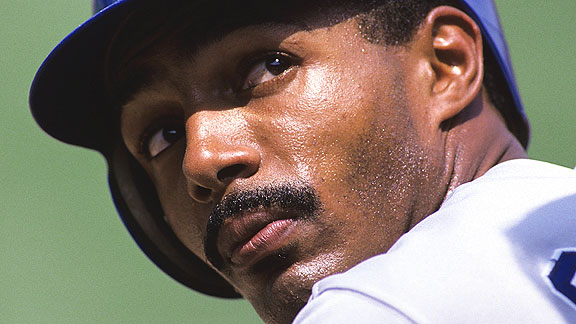
Ronald C. Modra/Sports Imagery/Getty ImagesJohn Shelby finished second on the Dodgers in home runs in 1987 at age 29, then declined.
As Dodgers watchers everywhere wonder how much latitude struggling James Loney will get, I thought I’d take a look at how much latitude others in similarly dire straits have gotten.
Loney has a .534 OPS, putting him firmly in position to have one of the worst Dodgers starts through the end of May of any regular since 1988:
Worst OPS through May
(minimum 3.1 plate appearances per team game)
.452 John Shelby, 1989
.457 Alfredo Griffin, 1988
.532 Mike Davis, 1988
.582 Cesar Izturis, 2003
.595 Jose Offerman, 1994
Source: Elias Sports Bureau (not adjusted for park factors)
Here’s what happened next to those five:
John Shelby, 1989
Shelby came to the Dodgers in a May 1987 trade and hit 21 homers in 120 games. He declined in 1988 to a .715 OPS but still contributed 10 homers and respectable defense in center field for the World Series champs. However, the roof caved in the following year.
He finished April batting .186 with two extra-base hits — and then got worse. In May, he got two more extra-base hits, but his batting average fell to .168 — and then got worse. Still playing almost every day, he slid to .160 — going 0-for-10 in the 22-inning game at Houston — although he did hit his one and only home run of the year that month.
You might conclude that there was a lack of offensive alternatives, especially considering that injuries limited Kirk Gibson to 71 games, but Gibson missed only four weeks before the All-Star Game and played regularly in June (including an 0-for-8 game June 17 against San Diego). Mike Marshall was off to a slow start in right field, but on the bench was Mickey Hatcher, who batted .307 before the All-Star break. However, none of those three could really play center field — although the Dodgers did try Gibson there occasionally.
In June, the Dodgers called up 24-year-old Jose Gonzalez. He mostly rode the pine in the early going but got a week’s worth of starts in late June and went 12-for-26 with three walks, at which point he began getting the majority of playing time in center field. Franklin Stubbs, Billy Bean without an “e” and Mike Huff were among those getting a shot, as the Dodgers looked for anyone who could help.
Shelby was sent to the minors in July by Dodgers general manager Fred Claire. “They said I could either come to Albuquerque … or be released,” Shelby told the Los Angeles Times later that year. After an .810 OPS in 32 games with the Dukes and manager Kevin Kennedy, he returned to the majors to play much of the final five weeks in center for the Dodgers and hit his season peak. Unfortunately, that peak was merely a .248 batting average with only three walks to go with 26 strikeouts — a .583 OPS. He never got it together.
He remained a Dodger until the next June, however, before he was released. He signed with Detroit and homered in his first game as a Tiger.
Alfredo Griffin, 1988
Savvy readers will notice the Dodgers went to the World Series despite two horrific starts from newly acquired regulars. One was Griffin, who came in a big, multiplayer trade with Oakland with the intention of ending the Dodgers’ shortstop-by-committee approach of 1987 (Mariano Duncan, Dave Anderson and Glenn Hoffman).
Griffin was hitting a robust .224 (.642 OPS) through April 23, then slumped to a .128 batting average and .334 OPS over the next four weeks, leaving him at .457 when he was sidelined for two months with a broken right hand from a Dwight Gooden fastball. Anderson got most of the starts in Griffin’s absence and almost stole the job for good with a Jamey Carroll-like .309 batting average and .416 on-base percentage in his first 40 starts, but he tailed off dramatically just as Griffin was nearing his return.
Griffin, still probably not completely healed, had a .558 OPS the rest of the season, then went 7-for-41 with two walks and one extra-base hit in the postseason.
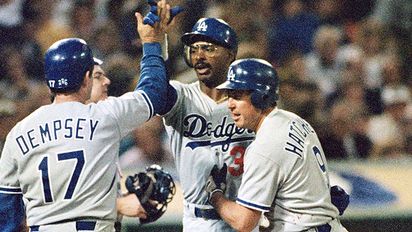
Mike Davis, 1988
Before the ’88 season, the Dodgers were counting on a free-agent signing in a big way — but until Gibson became available, that free agent was Davis, who hit 65 homers in his final three seasons with the A’s. But Davis reached the end of May without a single long-distance call, struggling with a .210 batting average, .283 on-base percentage and .248 slugging percentage.
He started 38 of the Dodgers’ first 41 games, but it was around the end of May that manager Tommy Lasorda’s patience began to run out. Davis started only 11 of the next 81 games, although he never went more than a few days without an appearance. Mike Marshall moved to right field from first base, where Lasorda mixed together a combo of players including Hatcher, Stubbs, Danny Heep, Tracy Woodson and, until he got traded to St. Louis, Pedro Guerrero.
Stubbs would by default be considered the player who replaced Davis in the lineup, and the former first-round pick wasn’t all that much to write home about with a .288 on-base percentage and .376 slugging for the year. But Davis never got any better. From July 25 on, he went 10-for-70 with six walks, a .394 OPS.
It was this year-long collapse that made the two-out walk he drew off Dennis Eckersley in the bottom of the ninth inning of Game 1 of the 1988 World Series so improbable and impossible in its own right. He then hit a home run in the clinching Game 5, matching his entire regular-season total.
Cesar Izturis, 2003
Izturis became the Dodgers’ regular shortstop in 2002 at age 22, his first year with the team after coming in a trade from Toronto. As he was well above average in the field, the Dodgers were willing to tolerate almost anything from him with the bat, riding out a .512 OPS after May 1 that year.
The following season brought hope for improvement, but after a 5-for-9 start in an opening series at Arizona, Izturis was down to a .582 OPS through May. Unlike his predecessors on this list, his glove and health kept him in the lineup. He played 158 games in 2003 and started 154, even though he barely showed any improvement at the plate, finishing the season at .597.
Two years later, Izturis reversed his fortunes at the plate so dramatically that he was batting .342 at the end of May with an .812 OPS, numbers that propelled him to the All-Star Game despite a June in which he went 9-for-86 with four walks.
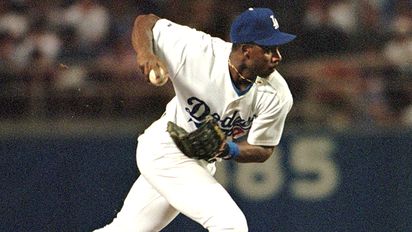
Jose Offerman, 1994
Once the most touted prospect in the Dodgers’ farm system, Offerman launched his career in 1990 with a home run in his first major league at-bat. But through the first four seasons of his career, his career OPS was a mediocre .650 in nearly 1,500 plate appearances. That wouldn’t have been so bad if, unlike Izturis, he hadn’t become notorious for his fielding flaws, making 79 errors in 1992-93 alone.
In 1994, he got off to his worst start yet. Like Loney, he was able to string together some singles, going 15-for-44 over a two-week period, to get his batting average above .200. But when May turned to June, his OPS was still below .600.
Offerman stayed in the lineup in June, muddling along at the same pace. His major league season ended abruptly June 26 with a demotion to Albuquerque by Claire (who replaced him with Rafael Bournigal), about six weeks before labor strife ended the ’94 season.
The crazy thing about Offerman is, unlike everyone else on this list, he actually earned some long-term bragging rights at the plate. Presaging Izturis, he parlayed a hot start to the 1995 season (.429 on-base percentage/.442 slugging through June) into a spot on the All-Star team. Still only 27 when the Dodgers sent him to Kansas City in exchange for pitcher Billy Brewer (who then went to the Yankees for Mike Judd), Offerman went on to play another decade in the majors, collecting more than 1,000 hits, twice leading the American League in triples and making the All-Star team again in 1998.
*Andruw Jones, 2008
You might be wondering why the notorious flail that was Jones wasn’t on the list. He just missed having enough plate appearances to qualify for the above criteria. Had we relaxed that requirement, his .543 OPS would give him the fourth-worst start by a Dodgers regular since ’88. He started 36 of the Dodgers’ first 43 games. One year ago today, he made his final start before knee problems sent him to the disabled list, where he remained until July. Playing semi-regularly upon his return, he showed no improvement, going 10-for-63 with a .433 OPS and driving the Dodgers to make the end-of-the-month trade for Manny Ramirez.
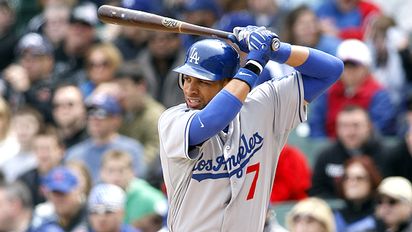
**James Loney, 2011
What does this all mean for Loney? A bad start doesn’t have to mean the end of his career, although it would help if he were a middle infielder.
Anything can happen — all we have above are anecdotes — but it can’t be a comfort to know that since 1988, none of the Dodgers who have started their seasons in similar fashions recovered before the year was out.
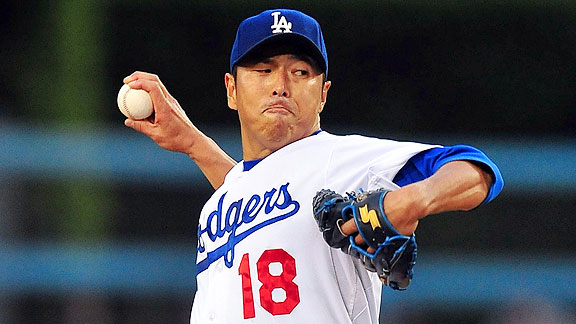
Gary A. Vasquez/US PresswireHiroki Kuroda has allowed two earned runs or fewer in six of nine starts this season.
It’s hard to feel too low when you’ve got Hiroki Kuroda on your side. Lovely and amazing.
The 36-year-old turned in his second straight outing of shutout ball, going 7 2/3 innings in the Dodgers’ 3-0 victory over Milwaukee, and now has an ERA of 2.80 that is 10th in the National League, a hair behind Clayton Kershaw’s 2.75.
Kuroda gave up eight baserunners – six of them reaching scoring position, thanks in part to his first career balk – but he got himself out of every jam in the first seven innings, thanks in part to two big catches by Matt Kemp.
Kemp also hit a two-run homer in the first inning after a walk to Andre Ethier, and the score held until an RBI double for an insurance run in the eighth by Jerry Sands, driving in Juan Uribe, who went 2 for 3 with a walk.
Kenley Jansen scared the pants off the faithful by entering the game in the top of the eighth with a runner on and throwing seven straight balls, but Casey McGehee fouled out. Matt Guerrier then pitched a 1-2-3 ninth for his first save as a Dodger. Why was Guerrier closing the ninth instead of Vicente Padilla? The answer, my friends, is blowin’ in the office of Dodger trainer Stan Conte.
To recap the last four Dodger victories:
May 17 – Dodgers 3, Brewers 0 – Vicente Padilla unavailable
May 13 – Dodgers 4, Diamondbacks 3 – Zach Lee MRI revealed
May 11 – Dodgers 2, Pirates 0 – Hong-Chih Kuo to the disabled list
May 10 – Dodgers 10, Pirates 3 – Blake Hawksworth hurts groin
Two weeks from today, the bills reportedly come due for Frank McCourt. Will he bail and file for bankruptcy? Will he surrender the team to Bud’s butting-in? Will he find another blowhard to do his bidding? Or will there be a different Plan B?
* * *
I’m guessing that it’s been a very long time since the Dodgers have had a starting lineup this late in the season in which the players with the most playing time at three positions each had an OPS below .600.
Jerry Sands, James Loney and Juan Uribe have combined to go 75 for 352 (.213) with four home runs, 16 doubles, 26 walks and 69 strikeouts. On-base percentage: .273, slugging percentage: .293, OPS: .566.
This one’s going to be all about Vin. The result of the bottom of the ninth and the game won’t matter to me at all. Just his voice …
Milwaukee should have about a half a dozen runs, but they have two. The Dodgers should have what they’ve got.
John Axford … He’s a native of Dutch heritage on his mom’s side. He played soccer in elementary school.
Fouled that right into the mask of Jonathan Lucroy – nnnh.
Tried to time that thing and that pitch was on top of him, and he just did get a little bit of it and fouled it off.
So Kemp, blown away, strikes out for a second time. And now Uribe.
Boy he busted that thing – that was 97. He let that baby fly. Oh-and-two to Juan Uribe.
Ball one. Even that’s 97. Hard to see him throw as hard as he does and understand he had Tommy John surgery.
Big breaking ball. So Uribe follows Kemp and comes up empty-handed. Up here – down there.
Runs tough to come by. Dodgers shut out when Billingsley lost that one-hitter. Dodgers scrambled for one run yesterday and come back with one run tonight. And now the Dodgers down to their last strike.
And a high-fly ball. It’s playable. Gomez is calling all the way, and that’s it. So the Dodgers struggle and huff and puff and come up empty.
Just his voice …
Bottom of the eighth inning. This team is hopeless.
I’m giving up on them scoring a run. Not just in this inning. Not just in this game. Ever again.
The Dodgers have already hit two balls to the warning track in this game. They’ve already exceeded expectations. They’ve got nothing.
The opposing pitcher’s name is Kameron Loe. Kameron with a K. Need I say more? There’s no chance.
Jamey Carroll steps up. An old man playing over his head. Living on borrowed time. Time to repay the debt.
Carroll fouls two pitches off his feet. That’s our idea of consistency.
The next pitch tails away from him, and he pokes it slowly to the second baseman. Slowly, yet Carroll is even slower to first base.
Aaron Miles is up – holy cow, we’re back to relying on Aaron Miles. Miles hits the ball a mile – if your map is on a scale of 1 inch: 7.3 feet. The comebacker easily retires him.
Retired superhero Andre Ethier is the third batter. Bad elbow, luck gone, ready to disappear off the batting leaders any day now. A nation turns its lonely eyes to his hitting streak.
Ethier takes the first pitch the other way – grounding it right to the third baseman.
Nine pitches, three outs. Rancid browbeating didn’t work either.
For one moment, I choose to forget.
I choose to forget the sub.-500 record, the black offense, anyone whose last name is McCourt. The empty seats in the stadium don’t reflect a depression – they’re just elbow room.
I choose for one moment to see the Dodgers as a complete blank slate, a team with its problems washed away, with every opportunity to define itself and its destiny.
This new team trails, 2-1, in the bottom of the seventh inning, but Juan Uribe and James Loney have led off the inning with singles. Jay Gibbons is the batter, and rather than fret, I choose to strip away layers and layers of pessimism.
Gibbons strikes out swinging.
It’s just one out, I say.
Big Rod Barajas takes a ball, then swings and fouls one back. A ball dips down at the plate for a 2-1 count, and then he fouls another pitch back, and then another. And then, he swings big and pops up to left field.
The tying run is still in scoring position. The pressure is still on Milwaukee. I am at one with possibilities.
Pinch-hitter Dioner Navarro steps to the plate, and I hone in on his pristine white uniform sleeve, with a memorial No. 4 patch honoring one of the best this franchise ever produced. Navarro has a batting average, but I don’t look at it. He’s in that uniform, and that’s good enough for me. Such a uniform.
Navarro takes a strike, then swings at a pitch near his shoetops and golfs it. I pray that perhaps we have switched to golf, and Navarro is laying a picture-perfect shot onto the green. But no, it’s still baseball. The soft looper lands in the shortstop’s glove.
Runners in scoring position, nobody out, and I told myself to believe. But looking back, I’m not sure I really did. It would have been a pleasant surprise, but a surprise just the same, had the Dodgers scored their second run of the game.
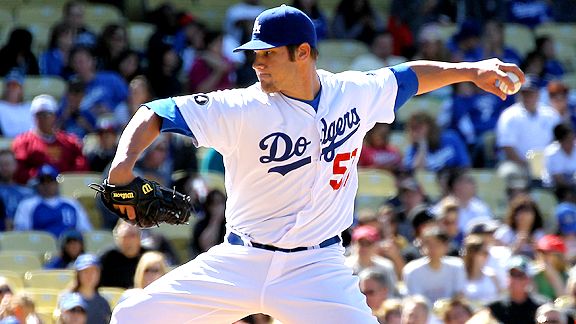
Stephen Dunn/Getty ImagesScott Elbert threw 19 pitches, 12 for strikes.
Although there was another sad performance from the offense (including the end of Andre Ethier’s on-base streak) and another disappointing inning from Ted Lilly, a four-run second in today’s 4-1 Dodger loss, let’s take some time to cheer for Scott Elbert. The lefty, whose season went so awry a year ago, got off to a great 2011 start for the Dodgers by striking out the side in the eighth inning.
Javy Guerra made his major-league debut in the next inning and allowed a one-out single and nothing else.
* * *
Update: Contrary to initial reports, Rafael Furcal did not bat right-handed Saturday for Albuquerque, according to Tony Jackson of ESPNLosAngeles.com. Sunday, Furcal doubled leading off the game on the way to a 1-for-4 day. He also made an error.
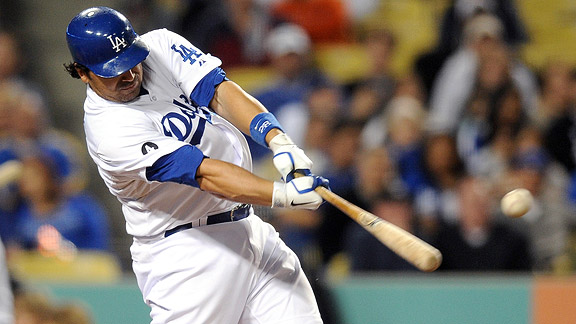
Kelvin Kuo/US PresswireRod Barajas could become the second player in Dodger history, after Marquis Grissom in 2001, with at least 20 homers and fewer walks than homers.
By around the middle of the fifth inning today, the Dodgers will have completed 25% of their 2011 regular season. Here are the paces some of their most frequently used players are on:
Andre Ethier: 16 homers, 219 hits, 41 doubles, 117 strikeouts
Matt Kemp: 28 homers, 49 steals in 61 attempts, 203 hits, 81 walks, 101 RBI, 36 doubles, 138 strikeouts, 162 games
Jamey Carroll: 0 homers, 158 games, 178 hits, 12-for-12 stealing
Rod Barajas: 28 homers, 20 walks, 57 RBI, 134 strikeouts
James Loney: four homers, four steals, eight doubles, 49 RBI, 32 walks, 73 strikeouts
Juan Uribe: 24 doubles, 24 walks, 12 homers, 126 strikeouts
Clayton Kershaw: 20-12, 239 innings, 81 walks, 259 strikeouts
Chad Billingsley: 8-12, 227 1/3 innings, 85 walks, 203 strikeouts
Hiroki Kuroda: 16-12, 215 1/3 innings, 53 walks, 166 strikeouts
Ted Lilly: 12-12, 178 1/3 innings, 36 walks, 117 strikeouts
Kenley Jansen: 0-0, 65 innings, 41 walks, 113 strikeouts
Matt Guerrier: 8-8, 81 1/3 innings, 28 walks, 65 strikeouts
